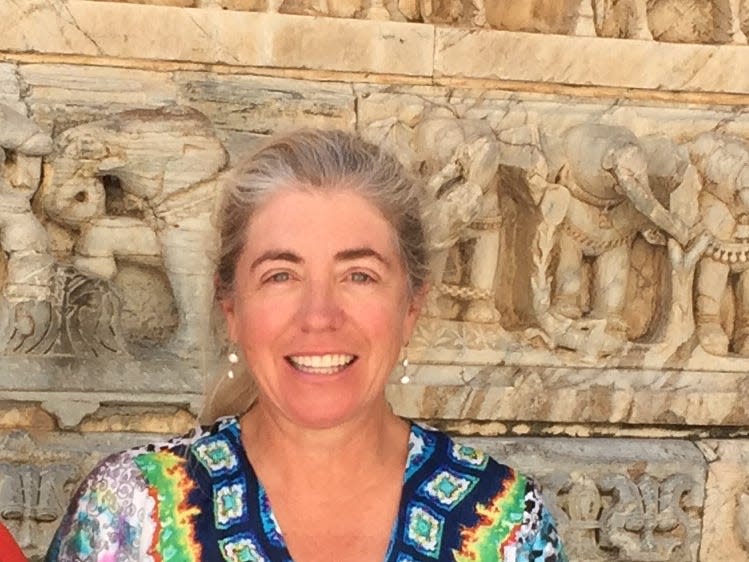Graham: Even if you're not riding broncs
A month after my brother had major surgery on his cervical spine, I encouraged him to see a yoga therapist friend in North Carolina. I knew that she would start with breathwork (pranayama) for pain relief and meditation. Of course, he needed to ask his surgeon first about starting anything new, and his western doctor said, “Absolutely no yoga.”
The doctor had practiced Bikram Yoga, a form of hot yoga, but obviously to no fault of his own was not familiar with a few other limbs of yoga that include breathwork, meditation, and ethical guidelines (yamas and niyamas) that form a moral code of conduct. While some forms of pranayama are more advanced than others, there are many benefits to practicing breathwork.
Krishnamacharya, widely regarded as the father of modern yoga, said, “If you can breathe, you can do yoga.” Pranayama is Sanskrit, and it loosely translates to ‘control of the breath.’ Prana means ‘life force’ or ‘breath,’ and ayama means ‘to control.’ Think of it as using practices to control the “prana” within your body through breathing techniques. Pranayama can be an powerful tool to calm the body and the mind, and there are even practices to give you more energy, depending on which nostril you breath through.

A few years ago on the ranch, we had a cowboy who had professionally competed as a bronc rider. I asked him in front of a group of other cowboys if he did any yogic breathwork to help him with his riding. Of course, all the cowboys’ ears perked up with the mere mention of yoga, and the bronc rider said, “Well ma’am, matter of fact, I was taught to force air out of my nose to ensure I kept breathing.” This is known as kapalbhati breath, and is it is important to have a strong pranayama practice before starting it because it is more advanced.
Nadi Shodhana, or “alternate nostril breathing” is the practice of breathing through nostrils one side at a time as it suggests. Alternate nostril breathing settles the mind, body, and emotions and is very helpful if you are experiencing stress or anxiety.
If you are interested in trying it, here are some pointers:
First: Sit quietly in a chair or on the floor. Sit up straight, pulling your shoulders back with your ears over your shoulders, your shoulders over your hips. Take a few normal breaths inhaling and exhaling through your nose. Feel your ribs expand front to back and side to side.
Second: Bring your right hand in front of your nose. Move your forefinger and middle finger out of the way by placing them between your eyebrows to serve as an anchor. Take a deep breath in and out of your nose. Then close your right nostril with your right thumb and inhale through your left nostril slowly and steadily.
Third: Close your left nostril with your ring finger and pinky; both nostrils are closed to briefly retain your breath at the top of the inhale (a brief pause).
Fourth: Open your right nostril and slowly release the breath through your right nostril. Pause briefly at the end of the exhale then inhale through the right nostril.
Fifth: Lightly hold both nostrils closed then open your left nostril to release the breath slowly on your left side. Then breathe in through the left nostril, hold and out through the right.
Repeat the process two or three times or longer. Sometimes you will tend to turn your head towards the right but try to keep your forearm in the center of the body. At times, I have even rested my elbow on a stack of pillows in my lap or the back of chair.
When I started practicing yoga over 30 years ago, I had a difficult time embracing alternate nostril breathing, but over the years I have felt the benefits of practicing it regularly. While breathwork is usually safe for most people, if you have a lung condition, asthma, or COPD you might find breathwork difficult. Take your time with any breathwork practices and do not hesitate to contact a respiratory or yoga therapist. If you have any symptoms like shortness of breath, dizziness, chest pains, fainting, or vomiting stop immediately. If you have a health condition, talk to your doctor, and do not hesitate to seek out a professional.
Meanwhile, take Sting’s advice and be good to yourself “with every breath you take.”
Ashton Graham is an educator, book publisher, photographer, cowgirl and yoga teacher. She is currently studying to become a yoga therapist and lives on a ranch in West Texas. Subscribe to her newsletter “Maintaining Balance” www.ashtoncannon.com.
This article originally appeared on Las Cruces Sun-News: Graham: Even if you're not riding broncs

